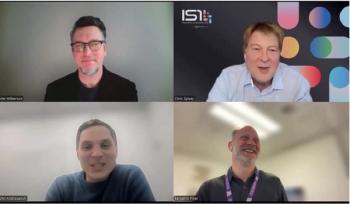
BioPharma By the Numbers: Bioprocess Hiring Creating Capacity Constraints
Key Takeaways
- Bioprocessing capacity growth is outpacing the industry's ability to hire and retain skilled staff, especially in process engineering roles.
- Cross-border hiring from Europe to the US has declined due to H-1B visa changes and geopolitical factors, affecting staffing.
The second installment of the monthly BioPharma By the Numbers infographic series details the hiring and retention challenges faced by US biopharma.
Welcome to the second installment of the monthly BioPharma By the Numbers infographic series, where we take a data-driven look at key sectors, trends, and topics in the biopharma industry. All data are sourced from the BioPlan Associates 22nd Annual Report (1).
Bioprocessing capacity has grown consistently over the past 20-plus years (1). Expenditures on capacity expansions have paralleled the demand for biotherapeutics and vaccines, which has grown at around 11% to 14% annually for decades. Because of this doubling every 5 years, bioprocess hiring over the past 2 decades has had a hard time keeping up. Despite the industry being much more efficient than in the past, it has been a challenge to train, develop, and retain new staff to fill all the positions.
Process engineers and process development (PD), both up and downstream, for example, are critical roles and have been notoriously difficult to fill. Depending on the role, between 25% and 36% of industry facilities are reporting difficulties hiring for existing operations. We also see differences between the US and European Union (EU). Europe, for example, continues to have problems in hiring downstream PD staff. Nearly half of facilities in the EU can’t get the right people. Difficulties remain a remarkably stubborn constant as the industry grows and expands globally.
The training being provided today by reputable organizations is important. But it only goes so far in a good manufacturing practice (GMP) environment. Hands-on experience is indispensable, and on-the-job training in GMP is a vital part of the process. This, in particular, makes staff retention a challenge. Once fresh people get trained, if they don’t like where they are or what they’re doing, they have other options. The company has done all that training and has to start the hiring/training cycle all over again. The problem is systemic, and solutions are not easily at-hand.
Let’s take a look at the numbers!
Changes in H-1B visas impact US hiring
Anecdotally, the cross-border hiring from Europe to the US in bioprocessing has traditionally made up 30% to 60% of annual hires. Today, multiple recruiting agencies have reported zero cross-border hiring. There are many reasons for this change. Typically, companies with subsidiaries in the US will send qualified staff for a finite timeframe. Not so much anymore. Reports of staff requesting not to travel to the US, even for business meetings, are more common.
Fueling this trend are a confluence of factors: the current H-1B policies, tariffs on pharmaceuticals, immigration challenges, funding cuts at universities, FDA, NIH, and firings at CDC. These all create hurdles to hiring in the US. It is not hard to imagine EU companies unwilling to spend the $100,000 for each employee to staff up a facility to support a subsidiary’s capacity increases. As we have heard in the press, some EU headquarters are putting investments on hold until there is “stability.”
Skilled labor becomes the new bottleneck
Given the current hiring and retention picture, the real bottleneck to onshoring in the US will not be a company’s willingness to break ground with a new facility, but whether they can be more effective at hiring from an increasingly limited domestic pool of skilled staff. Onshoring will require long-term strategic HR investments. Long-term, expanding the domestic pool will require universities and training organizations to graduate an increasing batch of educated candidates (e.g., 2-4 years). And then, this pipeline of candidates will require that GMP facilities invest the time and resources in their on-the-job training, lasting more years.
In Europe, thousands of EU biopharma staff are being let go at Roche, Novo Nordisk, Ferring, and others. So, the pool of available trained staff is pretty deep. However, those candidates may not be considering the US as an option. Anecdotally, we’ve heard clearly that very few would consider jobs in the US today. But it’s a complicated issue; it’s regional, it’s political, and it’s emotional. The landscape and attitudes can change rapidly.
If US executives are listening to their HR managers, they are well aware that bioprocessing jobs may be slower to fill. This means capacity expansion plans may be delayed. Many may not be calculating how shallow the US-based pool of candidates may be. As a result, facilities’ current staff may already be targets for poaching. Retention has been a major problem for 20 years, and if they’re not prepared for it, the loss of key staff could create disruptions to productivity that could cost a lot more than just the additional hiring expenses.
Reference
1. BioPlan Associates.
Newsletter
Stay at the forefront of biopharmaceutical innovation—subscribe to BioPharm International for expert insights on drug development, manufacturing, compliance, and more.





